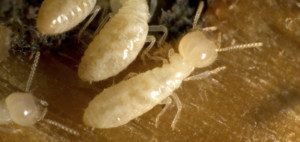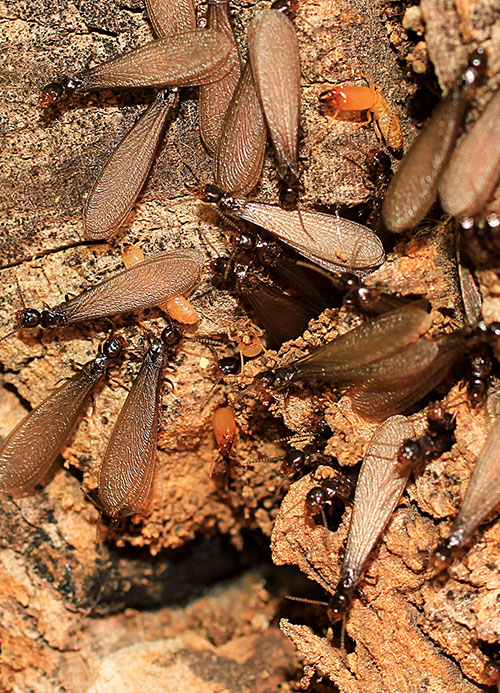Signs of Termites in Your Indianapolis Home–Termites are silent destroyers that can wreak havoc on your home if left unchecked. For homeowners in Indianapolis, being able to recognize the early signs of termite infestation is essential for protecting your property. From noticing termite wings fall off to spotting flying termites inside your house, these subtle indicators can save you from extensive damage and costly repairs. Understanding the various signs of termites in home settings, such as drywall signs of termites or seeing long winged insects in your house, can help you take swift action. In this article, we will delve into the common signs of termite damage and how to effectively identify and address them.
Termites are notorious pests that can cause significant damage to homes if left unchecked. Recognizing the early signs of termite infestation is crucial for protecting your property. In this article, we will explore various signs of termites in a house, including those specific to ceilings, walls, and wood, to help you identify potential issues early on.
- Early Stage Signs of Termites in Ceiling
- Signs of Termites in House
- Signs of Termites in Home
- Signs of Termites on Walls
- Drywall Signs of Termites
- Signs of Termite Damage in Wood
- Signs of Termites Sawdust
- Signs of Termite Damage
- How Big Are Flying Termites?
- Do Termites Fly in the House?
- How Do Flying Termites Get in Your House?
- Conclusion
Early Stage Signs of Termites in Ceiling
One of the early stage signs of termites in ceiling areas includes small pinholes and faint lines or trails. These marks are a result of termites burrowing through the wooden structures that support your ceiling. You may also notice faint sounds such as clicking or tapping, which are caused by termites actively feeding on the wood. If you detect any unusual noises coming from your ceiling, it’s wise to investigate further.

Signs of Termites in House
In general, there are several common signs of termites in house interiors that you should be aware of:
- Mud Tubes: Termites build mud tubes to protect themselves as they travel between their nest and food sources. These tubes are typically found along foundation walls, crawl spaces, or other areas where wood touches the ground.
- Swarmers: Winged termites, or swarmers, are reproductive termites that leave the colony to start new colonies. Finding discarded wings near windowsills, doors, or other light sources is a clear indicator of termites in your home.
- Hollow Wood: Tapping on wooden surfaces and finding them hollow or soft is a major sign of termite activity. Termites consume wood from the inside out, leaving a thin veneer on the surface.
- Frass: Termite droppings, known as frass, resemble sawdust or coffee grounds. Finding small piles of frass around your home can indicate an active termite infestation.
Signs of Termites in Home
When it comes to identifying signs of termites in home settings, being vigilant about changes in the appearance and structure of your home is essential:
- Bubbling Paint: Termites can cause paint to bubble or peel due to moisture buildup as they tunnel through walls and wooden structures. This can be mistaken for water damage, so it’s important to investigate further.
- Sagging Floors: If you notice floors that are sagging, dipping, or feel spongy underfoot, it could be due to termite damage weakening the wooden supports beneath.
- Stuck Windows and Doors: Termite damage can cause wood to warp, making windows and doors difficult to open or close. If you experience this issue without any apparent reason, termites might be the culprits.
Signs of Termites on Walls
Detecting signs of termites on walls can be challenging, but there are some key indicators to look out for:
- Hollow-Sounding Walls: Tapping on walls and hearing a hollow sound can suggest termite tunnels within. This is especially true for drywall, which termites can easily penetrate.
- Small Holes: Tiny holes in drywall are often a sign of termites entering and exiting their tunnels. These holes can appear in clusters and are usually accompanied by frass.
- Cracked or Distorted Paint: Similar to bubbling paint, cracks or distortions in paint can occur when termites are present behind walls. This is due to the pressure they exert on the surface as they feed.
Drywall Signs of Termites
Drywall signs of termites include visible mazes and tracks that appear just beneath the surface. Termites can chew through the paper layer of drywall, leaving behind a series of faint lines or trails. Additionally, if you notice sagging or discolored drywall, this could be a result of termite activity weakening the material.
Signs of Termite Damage in Wood
When examining wood for termite damage, there are several specific signs to look for:
- Galleries: Termites create intricate galleries or tunnels within wood. These galleries are often filled with frass and can significantly weaken the structure.
- Splintering: Termite-damaged wood may splinter easily when touched or probed. This splintering can make the wood appear brittle and compromised.
- Blistering: Blistering or raised areas on wooden surfaces can be indicative of termite tunneling just beneath the surface.
Signs of Termites Sawdust
One of the telltale signs of termites sawdust is the presence of frass, which closely resembles sawdust. This frass is often expelled from the tunnels and can accumulate in small piles around infested areas. If you notice what appears to be sawdust but can’t trace it to a typical woodworking activity, it could be a sign of termites.
Signs of Termite Damage
General signs of termite damage include structural weaknesses and aesthetic changes in your home:
- Weakened Structures: Over time, termites can cause significant damage to the structural integrity of your home. This can manifest as sagging beams, weakened floor supports, and compromised wall studs.
- Damage to Furniture: Termites don’t just target your home’s structure; they can also infest wooden furniture. Look for signs of damage such as small holes, frass, and weakened joints in your furniture pieces
How Big Are Flying Termites?
Flying termites, or alates, typically measure between 1/4 and 1/2 inch in length, including their wings. Their size can vary slightly depending on the species, but they are generally larger than worker termites. If you see insects of this size with wings, it’s important to determine whether they are termites or another type of insect.
Do Termites Fly in the House?
Yes, termites do fly in the house, particularly during their swarming phase. Swarmers are reproductive termites that leave the colony to mate and establish new colonies. Seeing these flying termites in your house is a strong indication of an existing termite problem that requires immediate attention.
How Do Flying Termites Get in Your House?
Flying termites can enter your house through small cracks, gaps, and openings around windows, doors, and foundations. They are attracted to light sources and can easily find their way inside during their swarming period. Ensuring that your home is properly sealed and maintaining regular pest inspections can help prevent them from gaining entry.
Conclusion
In conclusion, being aware of the signs of termites in your house is crucial for maintaining the structural integrity and aesthetic appeal of your home. From identifying termite alates in house to recognizing the presence of sawdust-like frass, understanding these indicators can help you catch infestations early. If you notice any signs of termites flying around house or observe winged termites inside house, it’s imperative to seek professional assistance. Smithereen Pest Control offers expert services to diagnose and treat termite problems, ensuring your home remains safe and sound. Remember, early detection and intervention are key to preventing significant damage and preserving the value of your property.
Roll out the red carpet, Indianapolis! Smithereen pest control in Indianapolis, your pest control Avengers, are here to save your day. As the ‘Iron Man’ of pest control companies in Indianapolis, we’ve been flexing our extermination muscles across commercial and residential properties since 1888. Whether it’s a cozy cottage, bustling bistro, vibrant school, serene healthcare facility, or even your own home, no place is too daunting for an Indianapolis pest control company. Our savvy residential pest control in Indianapolis are the ‘Sherlock Holmes’ of the insect world, deftly identifying pest problems, sniffing out conditions that attract these unwanted guests, and crafting cunning plans for their ousting and future discouragement. And the best part? We’re on a mission to deliver pest control solutions from apartment pest control in Indianapolis to rodent control in Indianapolis that are as reliable and safe as a superhero’s sidekick.
Our secret weapon? The Integrated Pest Management approach – a strategic game of chess focusing on extermination and prevention. This involves a thorough reconnaissance of your Indianapolis property, tackling conditions that fuel your pest problem, and sealing off entryways tighter than Fort Knox. As Green Shield Certified, we’re the eco-friendly ‘Captain Planet’ of the pest control services in Indianapolis, offering sustainable control strategies for long-term peace of mind. Be it termite infestations or bed bug control in Indianapolis, Smithereen is your trusted ally. So, pick up that Batphone and dial 317-279-6474 or fill out a form here for top-notch, comprehensive pest services in Indianapolis.